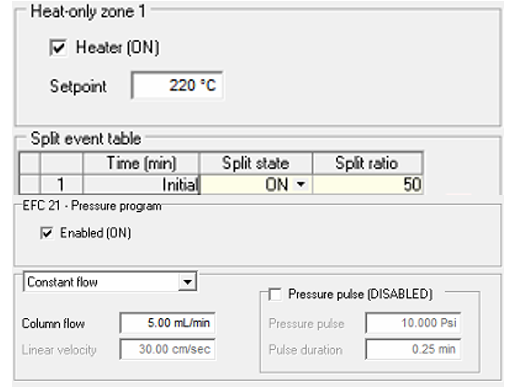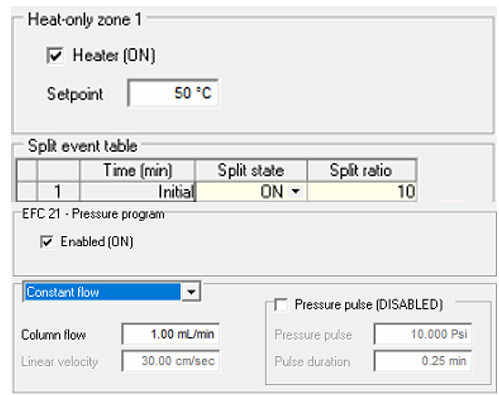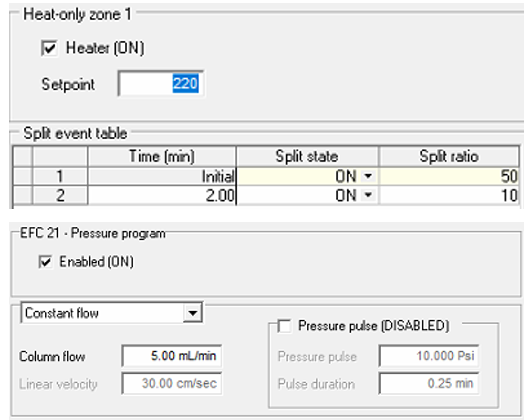Saving Gas in GC Systems
Shutdown methods
Shutdown methods are added to the end of a sequence or sample list with the aim to reduce gas consumption and electricity costs.
For example, create a method called ‘shutdown method’. Reduce the split flow and column flow from working conditions to an acceptable minimum (i.e. split to 10:1 and column flow to 1.0 mL/min). Set the temperatures of injectors, detectors and column oven to 50°C.
It is important to continue to have some flow through the system in order to preserve the life of the analytical column.
See below the comparison of a normal method (Figure 1) and shutdown method (Figure 2).
Figure 1: Normal method
Figure 2: Shutdown method
Gas saver mode
Gas saver mode reduces the flow after a set time, after the sample has entered the column. This significantly lowers the gas supply for the remaining analysis, whilst having no effect on analytical performance.
During a split injection a large portion of the carrier gas is used to get the sample onto the column. If you reduce the split flow after injecting, the gas consumption will be significantly less. In CompassCDS, for example, the method can be changed (Figure 3) from a split ratio of 50:1 at injection time with total flow 55 mL/min, after a specified time period the split ratio can be reduced to 10:1 with a total flow of 15 mL/min for the rest of the analysis. It must be ensured that there are no leaks in the system to prevent air and oxygen from entering the system which could affect the analysis.
Figure 3: Gas saver method
What are the benefits of gas saver modes and shutdown methods
Gas saver mode and shutdown methods, which can be easily set up in SCION analytical software (CompassCDS or MSWS), are a useful way to reduce the consumption of carrier gases such as helium, nitrogen and hydrogen. These gases can be in limited supply and expensive.
Using shutdown methods and gas saver modes helps reduce overall costs and contributes to a more sustainable laboratory.
Use both gas saver mode and shutdown methods in your sequence for the ultimate reduction in gas usage



